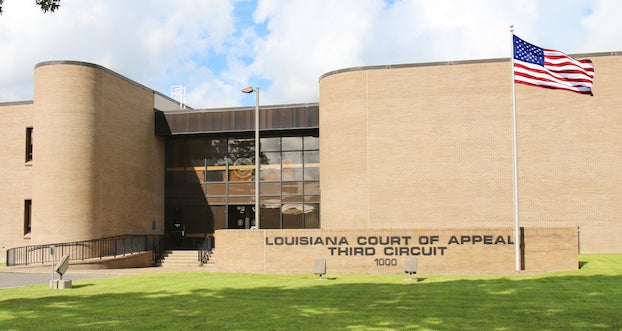Appeals court judges hear arguments about Davis-Saltzman case
Published 2:50 pm Wednesday, September 4, 2013
Defense attorneys for Robyn Davis and Carol Saltzman argued Wednesday that the women should not have been convicted of second-degree murder because the circumstantial evidence used to find them guilty was insufficient.
Arguing before the 3rd Circuit Court of Appeal, defense attorneys Glen Vamvoras and Shane Hinch also asked the court to overturn the conviction because of a five-month delay when a prosecutor fell ill during the trial.
Davis and Saltzman were convicted in May 2012 of the 2009 shooting death of Davis’ husband, Brian.
Judges John Saunders, John Conery and Jimmie Peters heard arguments from Vamvoras, the counsel for Davis, and Hinch, counsel for Saltzman, as well as from Assistant District Attorney Carla Sigler, who argued for the state.
Davis and Saltzman were sentenced to life in prison. Both defense attorneys want the verdict to be reversed or at least have a new trial scheduled.
Brian Davis’ body was found in a remote area off Wagon Wheel Road south of Lake Charles on July 1, 2009. During the trial, prosecutor Rick Bryant argued that Davis and Saltzman lured Brian Davis to the location and shot him multiple times. Bryant mentioned the husband’s extramarital affairs and nearly $645,000 in life insurance policies as possible motives.
Vamvoras said the women were convicted because of a “cumulative effect of numerous substantial errors,” including the continuance granted in November 2011 when Bryant became ill during jury selection. He said the jurors were selected but not sworn in before the continuance was granted.
Conery said the jury should have been sworn in soon after being selected, instead of more than five months later.
After the jury was sent home, Vamvoras said the prosecution was able to take 24 items of previously introduced items of evidence for forensic testing. He said the testing helped rule out deficiencies that were discovered while forensic detective Roxanne Baumgarten was being cross-examined.
Sigler said that fellow prosecutor Cynthia Killingsworth wanted to test the evidence and that it “didn’t help anything” with the case.
“It was not like this was worthwhile evidence that helped the state,” Sigler said. “There was no conspiracy to ‘fix’ the state’s case. It wasn’t broken.”
Vamvoras said Bryant’s opening statement was “vague” and did not comply with the law because there was “no mention of how the murder was carried out.”
“It forced the defendants to speculate what the case was about,” Vamvoras said. “There were so many things that happened that were unfair.”
Sigler said the 16-page opening statement gave a “general nature of the charge.”
Hinch said that FBI Agent William Shute — who used cellphone records to indicate that Davis and Saltzman were near Wagon Wheel when the shooting occurred — should not have been considered as an expert. Hinch said Shute’s testimony was “unreliable.”
Peters said Shute never confirmed that Davis and Saltzman were at the particular location beyond a reasonable doubt.
Hinch argued that Shute’s cellphone records were useful in catching fugitives in real time, but not in placing people at a particular area years earlier.
Sigler argued that Davis’ and Saltzman’s guilt could be proved by “piecing everything together” and “looking at the whole picture.”
“You can’t view evidence in a vacuum,” she said.
A decision is not expected from the panel of judges for several months.
Robyn Little Davis. (American Press Archives)
Carol Noland Saltzman




